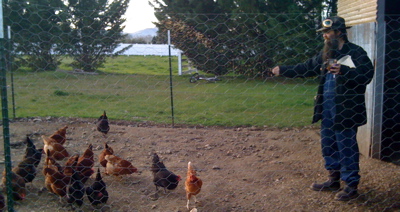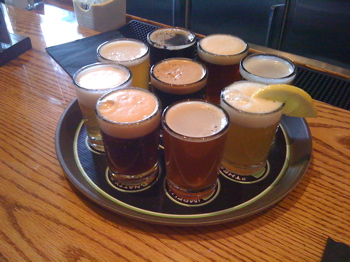There is one beer whose clarity, complexity, and subtlety make it seem to me like perhaps one of the most difficult to brew and brew well. This style, maligned by both old-school hop-heads and newcomers to the world of craft beer, is the venerable Pilsner. I can understand why the Pilsner would be a difficult style, though, because until recently, I had similar feelings lurking in my beer-soul.
Pilsners are usually described as well-hopped, but with today's hop-heavy IPAs, CDAs, and imperial beers, it is difficult to wrap one's palate around this golden style's hop character. The best way to approach a Pilsner tasting is to avoid any hoppy beers ahead of time. Hops can really be murder on one's palate, and when experiencing the subtleties of this style, you want your mouth and tongue to be fresh.
Select several Pilsners and try them side-by-side. If selecting American varieties, at first steer clear of the heavier takes on it, such as the Victory Prima Pils, and try something lighter and cleaner, like Oskar Blues Mama's Little Yella Pils. Definitely include at least one Czech variety, and do not pass up the German classics such as Paulaner Premium. Pour your Pilsner into a genuine Pilsner glass, and give it a good, creamy head at least two fingers thick. The aroma should easily present to one's nose a complex bouquet of hops, an interesting yeast, and a promise of the malty delights to come.
One should keep in mind that this beer is lagered for several months before being bottled, and that it was quite possibly one of the first clear beer styles ever brewed. Enjoy the Pilsner's beauty, reflect on the level of craftsmanship needed to brew and lager it, and sip slowly. After understanding these elements of the beer, it's perfectly all right to pour yourself a Mass of this wonderful nectar, and gulp away.
Pilsners are usually described as well-hopped, but with today's hop-heavy IPAs, CDAs, and imperial beers, it is difficult to wrap one's palate around this golden style's hop character. The best way to approach a Pilsner tasting is to avoid any hoppy beers ahead of time. Hops can really be murder on one's palate, and when experiencing the subtleties of this style, you want your mouth and tongue to be fresh.
Select several Pilsners and try them side-by-side. If selecting American varieties, at first steer clear of the heavier takes on it, such as the Victory Prima Pils, and try something lighter and cleaner, like Oskar Blues Mama's Little Yella Pils. Definitely include at least one Czech variety, and do not pass up the German classics such as Paulaner Premium. Pour your Pilsner into a genuine Pilsner glass, and give it a good, creamy head at least two fingers thick. The aroma should easily present to one's nose a complex bouquet of hops, an interesting yeast, and a promise of the malty delights to come.
One should keep in mind that this beer is lagered for several months before being bottled, and that it was quite possibly one of the first clear beer styles ever brewed. Enjoy the Pilsner's beauty, reflect on the level of craftsmanship needed to brew and lager it, and sip slowly. After understanding these elements of the beer, it's perfectly all right to pour yourself a Mass of this wonderful nectar, and gulp away.

 By
By 


















